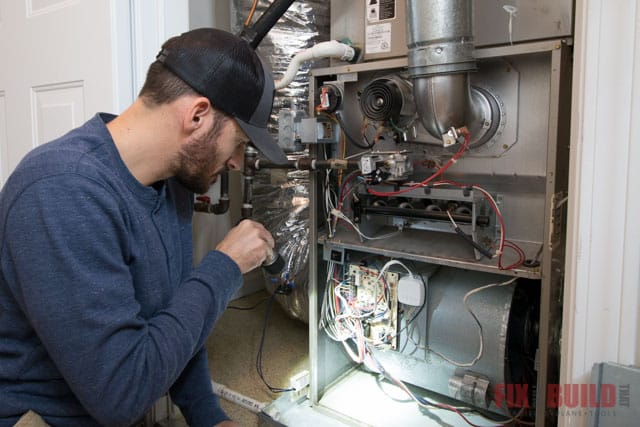As winter settles in, the prospect of a malfunctioning furnace can send shivers down your spine. The immediate reaction might be to call in a heating repair professional, but before you reach for the phone, consider that some furnace issues can be resolved without professional intervention. In this in-depth exploration, we will delve into common problems that could be hindering your furnace’s performance and guide you through troubleshooting steps that may save you from a hefty repair bill.
Identifying and Resolving Common Issues

Thermostat Settings
The thermostat is the control hub of your HVAC system, yet its significance can be easily overlooked. Start by ensuring that the thermostat is set to the “Heat” mode. If not, the furnace won’t activate. Additionally, check the temperature setting; if it’s higher than the current room temperature, your furnace might not kick in. Adjusting the temperature a few degrees below and then above the current reading could potentially solve the issue.
Air Filter
A simple yet critical component, the air filter, plays a crucial role in maintaining proper airflow. If your furnace refuses to turn on or operates for only short durations, a clogged or dirty filter might be the culprit. Regularly replace the air filter every one to two months to ensure unrestricted airflow, a task that requires minimal effort but can yield significant benefits.

Circuit Breaker
Like any other household appliance, your furnace is connected to a circuit breaker. A tripped breaker can disrupt power to the furnace. Check the circuit breaker and reset it to see if your furnace springs back to life. If the breaker continues to trip, it’s time to seek professional assistance.
Power Switch
All furnaces require electricity, and they come equipped with a power switch that must be in the “On” position for the system to operate. Locate the power switch (usually easily accessible or behind a panel) and ensure it is set to “On.” If it was in the “Off” position, flipping it to “On” should activate your furnace.
Air Intake Vent
While furnaces excel at heating air, they need a constant supply of it to function properly. A blocked air intake vent can lead to malfunctions or a complete shutdown. Inspect and clear any debris or objects obstructing the intake pipe, both inside and outside the furnace.
Gas Meter
If your furnace refuses to start, it’s prudent to check the gas meter or the main gas valve. Perhaps your gas service was turned off for some reason, or there could be an issue with the meter or gas line. If you detect a gas or sulfur odor, evacuate your home immediately and seek professional help. Otherwise, if the gas valve was turned off, simply turn it parallel to the pipe to restore fuel to your furnace.
Blower Motor
The blower motor is a crucial moving part of the furnace, and wear and tear can cause it to fail. When you activate the furnace, listen for the blower motor. If it doesn’t kick in, professional assistance is required to replace the blower motor.

Pilot Light
For furnaces equipped with a pilot light, ensure it is lit. The pilot light serves as the ignition source, and if it goes out, your furnace won’t operate. Attempt to relight it using a grill ignitor or a long fireplace match. If the light refuses to ignite or displays an unusual color, seek professional assistance promptly.
Conclusion
Before reaching out to a heating repair professional, empower yourself with the knowledge and tools to troubleshoot common furnace issues. By checking the thermostat, air filter, circuit breaker, power switch, air intake vent, gas meter, blower motor, and pilot light, you not only potentially save time and money but also contribute to the efficient functioning of your furnace throughout the winter months.
Regular maintenance and addressing minor issues promptly are key to ensuring the safety and longevity of your HVAC system. If problems persist or escalate beyond your expertise, seeking the assistance of a heating repair professional is advisable. Stay warm and comfortable this winter by fostering a well-maintained and properly functioning furnace. Your proactive approach to furnace care will pay dividends in both comfort and cost savings in the long run.






GIPHY App Key not set. Please check settings